Categoría "Ingeniería"
Se han encontrado 24 Coincidencias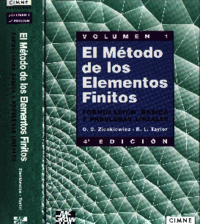
El Metodo de los Elementos Finitos Vol 1
143 Visitas | 250 Descargas | 2013-10-03 20:28:31 | efirvida
MEF mef, metodo de elementos finitos español, formulacion basica y problemas lineales cuarta edición

Método de los Elementos Finitos para Análisis Estructural
127 Visitas | 148 Descargas | 2013-10-03 20:48:47 | efirvida
Al efectuar una clasificación de las estructuras, suelen dividirse en discretas o reticulares y continuas. Las primeras son aquéllas que están formadas por un ensamblaje de elementos claramente diferenciados unos de otros y unidos en una serie de puntos concretos, de tal manera que el sistema total tiene forma de malla o retícula. La característica fundamental de las estructuras discretas es que su deformación puede definirse de manera exacta mediante un número finito de parámetros, como por ejemplo las deformaciones de los puntos de unión de unos elementos y otros. De esta manera el equilibrio de toda la estructura puede representarse mediante las ecuaciones de equilibrio en las direcciones de dichas deformaciones.
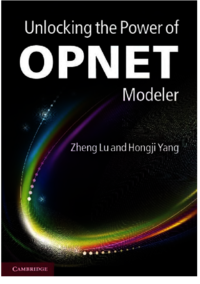
Unlocking the Power OPNET Modeler
89 Visitas | 137 Descargas | 2013-11-28 16:14:37 | fapaliza
Sigue una forma ordenada de como utilizar la herramienta OPNET Modeler . En su primera parte se describe como instalar OPNET y las interfaces de que dispone. En su segunda Parte describe como Modelar protocoos y Redes.En especial como crear modelos específicos utilizando APIs. En su tercera parte como modelar y modificar protocolos y redes.
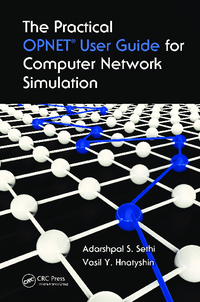
The Practical OPNET User Guide for Computer Network Simulation
Modelación y Simulación de Redes de Comunicaciones
79 Visitas | 128 Descargas | 2013-11-28 16:23:53 | fapaliza
Teachers of networking courses in universities constantly look for various new active learning tools for engaging students in classroom discussion, providing stu- dents with hands-on experiences, and getting students to become more interested in the subject area. OPNET software constitutes an excellent active learning tool that may help teachers achieve all these goals. In particular, OPNET software allows teachers to study and evaluate diverse networking systems with as simple or as complex topology as needed, illustrate various networking concepts, and show the students how the network performance changes under different conditions. It is no wonder that more than 500 universities worldwide* currently use OPNET network simulation software in teaching and research. This book is, to our knowledge, the rst text to provide a comprehensive descrip- tion of OPNET IT Guru and Modeler software and how to use this software for the simulation and modeling of computer networks. The book also includes a set of laboratory projects to help learn different aspects of the software.
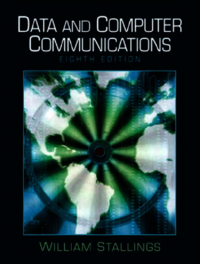
DATA AND COMPUTER COMMUNICATIONS
Redes de Computadoras
186 Visitas | 264 Descargas | 2013-11-28 18:22:38 | fapaliza
This book attempts to provide a unified overview of the broad field of data and computer com- munications. The organization of the book reflects an attempt to break this massive subject into comprehensible parts and to build, piece by piece, a survey of the state of the art.The book emphasizes basic principles and topics of fundamental importance concerning the technology and architecture of this field and provides a detailed discussion of leading-edge topics. The following basic themes serve to unify the discussion: • Principles: Although the scope of this book is broad, there are a number of basic principles that appear repeatedly as themes and that unify this field. Examples are multiplexing, flow control, and error control. The book highlights these principles and contrasts their application in specific areas of technology. • Design approaches: The book examines alternative approaches to meeting specific communication requirements. • Standards: Standards have come to assume an increasingly important, indeed dominant, role in this field. An understanding of the current status and future direction of technology requires a comprehensive discussion of the related standards. INTENDED AUDIENCE The book is intended for both an academic and a professional audience. For the professional interested in this field, the book serves as a basic reference volume and is suitable for self-study. As a textbook, it can be used for a one-semester or two-semester course. It covers the material in Networking (NET), a core area in the Information Technology body of knowledge, which is part of the Draft ACM/IEEE/AIS Computing Curricula 2005. The book also covers the material in Computer Networks (CE-NWK), a core area in Computer Engineering 2004 Curriculum Guidelines from the ACM/IEEE Joint Task Force on Computing Curricula. PLAN OF THE TEXT The book is divided into six parts (see Chapter 0): • Overview • Data Communications • Wide Area Networks xv xvi PREFACE • Local Area Networks • Internet and Transport Protocols • Internet Applications In addition, the book includes an extensive glossary, a list of frequently used acronyms, and a bibliography. Each chapter includes problems and suggestions for further reading. The chapters and parts of the book are sufficiently modular to provide a great deal of flex- ibility in the design of courses. See Chapter 0 for a number of detailed suggestions for both top-down and bottom-up course strategies.
Handbook of IPv4 to IPv6 transition
Transición de IPv4 a IPv6 una necesidad
79 Visitas | 119 Descargas | 2013-11-28 18:43:55 | fapaliza
is book takes you through the technology and issues associated with the implementation of IPv6. What is important to recognize is that not all the issues are fully resolved. e authors have succeeded in bringing clarity and scope of knowledge to the reader to enable use of the content in a pragmatic way allowing him to move forward and deploy IPv6 in real life situations.
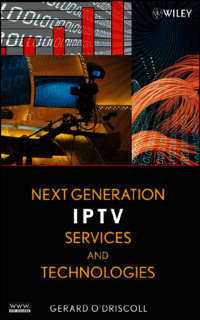
Next Generation IPTV Services
Servicio de Televisión en las Redes IP
95 Visitas | 142 Descargas | 2013-11-28 18:50:52 | fapaliza
Students and academics on postgraduate courses related to telecommunications, especially networking or IP protocols, will also ?nd the Next Generation IPTV Services and Technologies book ideal for supplementary reading.
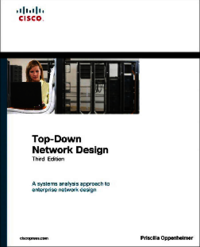
Top-Down Networks design
Diseño de Redes de Comunicaciones LAN, MAN y WAN
118 Visitas | 142 Descargas | 2013-11-28 18:59:30 | fapaliza
The purpose of Top-Down Network Design, Third Edition, is to help you design net- works that meet a customer’s business and technical goals. Whether your customer is another department within your own company or an external client, this book provides you with tested processes and tools to help you understand traffic flow, protocol behav- ior, and internetworking technologies. After completing this book, you will be equipped to design enterprise networks that meet a customer’s requirements for functionality, capacity, performance, availability, scalability, affordability, security, and manageability.

Voice over WLANs
Redes de Área Local Inalámbricas
107 Visitas | 119 Descargas | 2013-11-28 19:04:38 | fapaliza
The cost of a Wi-Fi interface has dropped from several hundred dollars to essentially zero; a Wi-Fi card is now a standard component in virtually every laptop sold. The penetration of that technology is now expanding to cell phones, PDAs, digital cameras, and other types of consumer electronics. Data rates have grown to 54 Mbps, and the new 802.11n radio link could push that to hundreds of millions of bits per second. Along with that we have seen important developments in security and manageability that make WLANs a trusted technology element in enterprise environments.
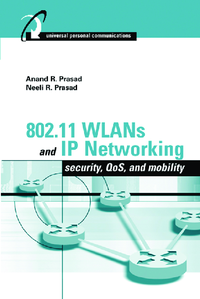
802.11 WLANs and IP Networking: Security, QoS, and Mobility
Redes Inalámbricas (WLAN)
103 Visitas | 174 Descargas | 2013-11-28 19:11:32 | fapaliza
A final chapter, Chapter 8, concludes the book with a vision for future. Definition for Fourth Generation (4G) mobile communications, Beyond Third Generation (B3G), and future generations are given. The need for these technologies from user, vendor, and operator perspectives is also discussed in this chapter. Technological enhancements needed from the protocol layer point of view and particularly for security, QoS, and mobility are also presented in the chapter. In this book several draft standards are discussed which might change with time; still the information in this book should be beneficial for understanding the interaction between the IP and MAC layers. We hope that this book will be of interest to business and technical managers and also to technical novices as well as experts in this field.

Diseño racional de pavimentos
Diseño y construcción de pavimentos
57 Visitas | 84 Descargas | 2014-01-20 20:03:45 | felixmichel
Es un material relacionado con la temática actual del diseño en estructuras de pavimentos para carreteras
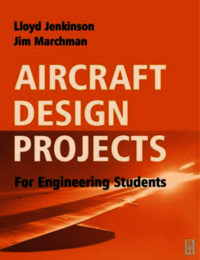
Aircraft Design Projects
74 Visitas | 94 Descargas | 2014-04-10 16:15:38 | raulito
There are many excellent texts covering aircraft design from a variety of perspectives. Some of these are aimed at specific audiences ranging from practising aerospace engineers, to engineering students, to amateur airplane builders. Others cover specialized aspects of the subject such as undercarriage or propulsion system design. Some of these are quite detailed in their presentation of the design process while others are very general in scope. Some are overviews of all the basic aeronautical engineering subjects that come together in the creation of a design.

Missile Guidance and Control Systems
82 Visitas | 132 Descargas | 2014-04-10 16:19:51 | raulito
The intent of this book is to present the fundamental concepts of guided missiles, both tactical, and strategic and the guidance, control, and instrumentation needed to acquire a target. In essence, this book is about the mathematics of guided flight. This book differs from similar books on the subject in that it presents a detailed account of missile aerodynamic forces and moments, the missile mathematical model, weapon delivery, GPS (global positioning system) and TERCOM(terrain contour matching) guidance, cruise missile mechanization equations, and a detailed analysis of ballistic guidance laws. Moreover, an attempt has been made to give each subject proper emphasis, while at the same time special effort has been put forth to obtain simplicity, both from the logical and pedagogical standpoint. Typical examples are provided, where necessary, to illustrate the principles involved. Numerous figures give the maximum value of visual aids by showing important relations at a glance and motivating the various topics. Finally, this book will be viii Preface of benefit to engineers engaged in the design and development of guided missiles and to aeronautical engineering students, as well as serving as a convenient reference for researchers in weapon system design.
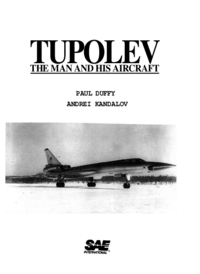
TUPOLEV. The man and his aircraft
98 Visitas | 132 Descargas | 2014-04-10 16:26:13 | raulito
A book about the history of Tupolev Joint Stock Company in the name of academician A. N. Tupolev, well-known in the countries of former Soviet Union and its allies. Its history is not so well-known in the West. This book is one of the first publications in the West about Design Bureau and aviation industry, especially all-metal aircraft, one of the most influential founders of which was Andrei Nikolaevich Tupolev.

Hidráulica de ríos y procesos morfológicos
64 Visitas | 77 Descargas | 2014-05-08 16:47:10 | raulito
El objetivo original de este trabajo fue la recopilación y traducción coherente de un material escrito originalmente en ruso y en inglés, y algunos textos en espanol, suficiente como para aplicar a un doctorado en estos aspectos, complementado con con algunos resultados de la experiencia de 30 años del autor en la consultoría de tópicos relacionados. Sin embargo, terminando el ejercicio de investigación se consideró pertinente efectuar su publicación con el propósito de compartir este proceso de aprendizaje.

NANOSCIENCE AND NANOTECHNOLOGY
66 Visitas | 72 Descargas | 2014-12-06 17:44:07 | raulito
Nanomaterials are of varying chemical complexity (bulk and surface), size, shape, and phase. Therefore, there exist large challenges in understanding the environmental health and safety of nanomaterials, and truly interdisciplinary efforts are needed. This book reflects the interdisciplinary nature of the research on the environmental and health impacts of nanoscience and nanotechnology. Chapter authors come from a variety of disciplines including chemical engineering, chemistry, civil and environmental engineering, environmental microbiology, geoscience, occupational and environmental health, pathology, pharmacology, and plant and soil science. The research described herein represents a compilation of some of the most recent studies and the current state of the science of the environmental and health impacts of nanoscience and nanotechnology. The book is divided into three parts as shown below.

Handbook of Technology and Innovation Management
46 Visitas | 73 Descargas | 2014-12-06 17:47:21 | raulito
For thousands of years, technological innovation – the application of knowledge about tools, materials, processes, and techniques to problem solving (Afuah, 2003) – has had a profound effect on our lives as people, sometimes positively, and other times negatively, as any user of electronic mail can attest. Perhaps more importantly for the scholarly study of business, technological innovation has been a central component of the way in which new economic value is created by permitting people and companies to use existing resources more efficiently, as well as to come up with products and services that meet people’s needs in ways that were not met before (Mokyr, 1990). Because technological innovation creates economic value, it also affects the growth and decline in shareholder wealth. This effect on shareholder wealth impacts all shareholders, regardless of whether they are founding entrepreneurs, employees, or investors in companies, and regardless of whether they are shareholders in the innovating company or the company that competes with innovators.

Hydrogen Fuel : Production, Transport, and Storage
56 Visitas | 50 Descargas | 2014-12-06 17:56:00 | raulito
The two most important environmental hazards faced by humankind today are air pollution and global warming. Both have a direct link with our current overdependence on fossil fuels. Pollutants produced from combustion of hydrocarbons now cause even more health problems due to the urbanization of world population. The net increase in environmental carbon dioxide from combustion is a suspect cause for global warming, which is endangering the Earth—the only known place to support human life. In addition, the import of expensive hydrocarbon fuel has become a heavy burden on many countries, causing political and economic unrest. If we look at the past 2000 years’ history of fuels, usage has consistently moved in the direction of a cleaner fuel: wood ? coal ? petroleum ? propane ? methane as shown on the next page. With time, the fuel molecule has become smaller, leaner in carbon, and richer in hydrogen. The last major move was to methane, which is a much cleaner burn than gasoline. Our future move is expected to be to hydrogen, which has the potential to solve both the environmental hazards faced by humankind. Through its reaction with oxygen, hydrogen intensely releases energy in combustion engines or quietly releases it in fuel cells to produce water as its only by-product. There is no emission of smoke, CO, CO2, NOx, SOx, or O3. In fact, the health costs for urban populations can be reduced by switching to hydrogen automobiles. Hydrogen can be produced from water using a variety of energy sources including solar, wind, nuclear, biomass, petroleum, natural gas, and coal. Since renewable energy sources (solar, wind, and/or biomass) are available in all parts of the world, all countries will have access to hydrogen fuel. Hence, a greater democratization of energy resources will occur. Also the use of solar, wind, or biomass in producing hydrogen does not add to environmental CO2. Before widescale use of hydrogen fuel can be accomplished, key technological challenges need to be resolved, including cost-effective production and storage of hydrogen. During the early adoption of hydrogen fuel, government incentives will be needed,
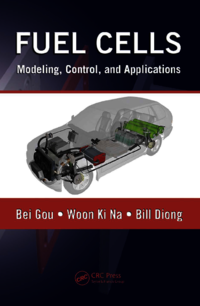
FUEL CELLS. Modeling, Control, and Applications
47 Visitas | 76 Descargas | 2014-12-06 17:58:23 | raulito
The present literature pays a lot of attention to the control design of fuel cell interfaces, while the research on control design for the fuel cell itself receives less attention than it should. This may be due to the complexities involved in control design. However, control is very important to fuel cell operation and effi ciency, and this book serves as an introduction to this topic. This book should be of interest to faculty, students, consultants, manufacturers, researchers, and designers in the fi eld of renewable energy, as it provides a detailed discussion on fuel cell modeling, analysis, and nonlinear control with simulation examples and test results. We assume its readers already have a fundamental knowledge of control theory and fuel cell chemical reactions.
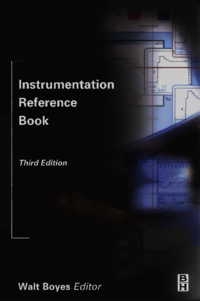
Instrumentation Reference Book Third Edition
83 Visitas | 124 Descargas | 2014-12-06 18:12:17 | raulito
E. B. Jones’s writings on instrument technology go back at least to 1953. He was something of a pioneer in producing high level material that could guide those studying his subjects. He had had both practical experience of his subject and had taught it at college, and this enabled him to lay down a foundation that could be built on for more than forty years. I must express my thanks that the first edition of the Instrumentation Reference Book, which E. B. Jones’s work was molded into, has sold well from 1988 to 1994. This book has been accepted as one of the Butterworth-Heinemann series of reference books-a goodly number of volumes covering much of technology. Such books need updating to keep abreast of developments, and this first updating calls for celebration!
Contribuir
Usted puede contribuir con Libros UCLV, es importante para nosotros su aporte..
Contribuir